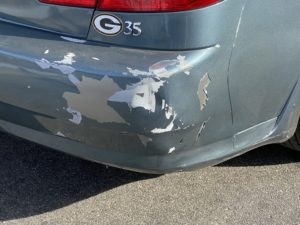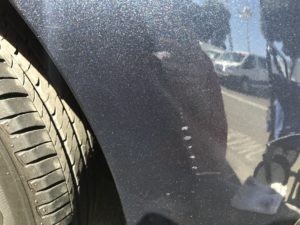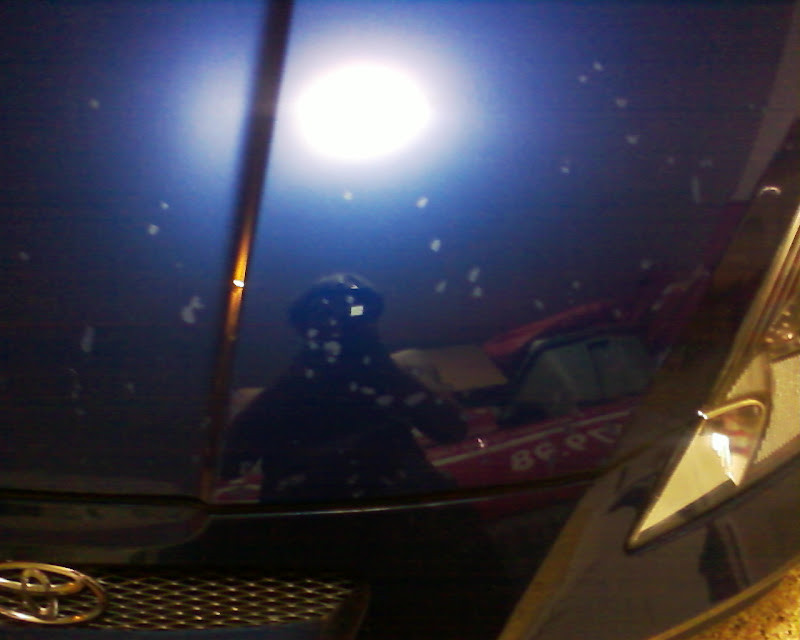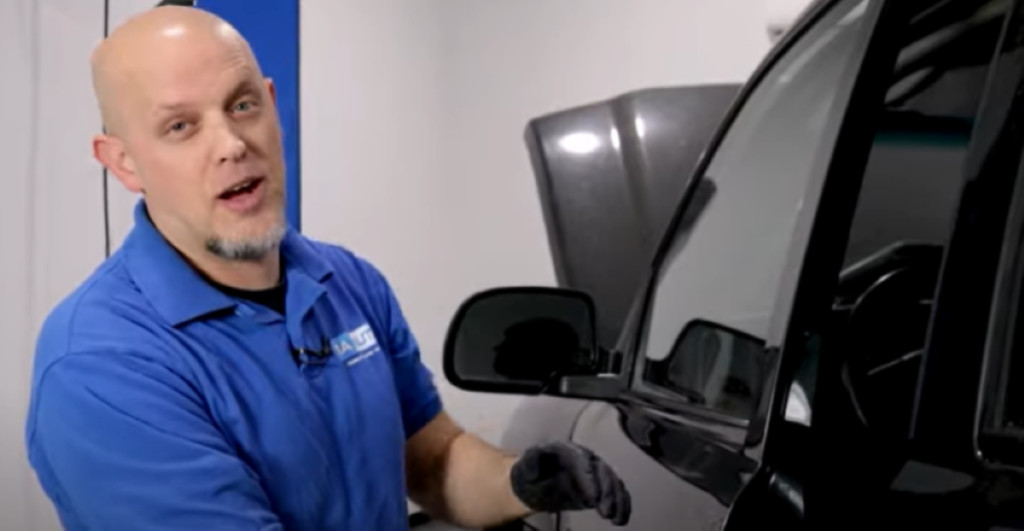How Much to Fix Cracked Paint on Car

Cracked paint on your car detracts from its appearance and value. CARDIAGTECH.NET understands the importance of maintaining your vehicle’s pristine condition and offers expert solutions. We’ll explore the costs associated with repairing cracked car paint, offering insights into the factors influencing price and helping you make informed decisions. Diagnostic Scanner BMW
1. Understanding Cracked Car Paint
Cracked car paint is more than just a cosmetic issue; it’s a sign of underlying damage that can lead to further problems like rust and corrosion. Understanding the causes and types of cracks is crucial for determining the appropriate repair method and associated costs.
1.1 Causes of Cracked Paint
Several factors can cause paint to crack on your car, including:
- Exposure to Sunlight: UV rays break down the paint’s binders, leading to brittleness and cracking.
- Temperature Fluctuations: Expansion and contraction of the metal underneath the paint can cause stress and cracking.
- Poor Paint Application: Improper preparation, thin paint layers, or incompatible products can result in premature cracking.
- Impact Damage: Accidents, debris, or even minor collisions can cause cracks in the paint.
- Age: Over time, the paint’s elasticity decreases, making it more susceptible to cracking.
1.2 Types of Paint Cracks
Different types of paint cracks require different repair approaches. Here are some common types:
- Spider Cracking: Fine, interconnected cracks that resemble a spider web.
- Stress Cracking: Cracks that appear in areas of high stress, such as around edges or corners.
- Hairline Cracks: Thin, barely visible cracks that can spread over time.
- Alligatoring: A pattern of wide, interconnected cracks that resemble alligator skin.
 Spider cracking on a car’s paint surface, resembling a spiderweb pattern
Spider cracking on a car’s paint surface, resembling a spiderweb pattern
2. Factors Affecting the Cost of Repairing Cracked Car Paint
The cost to fix cracked paint on a car varies significantly based on several factors. Understanding these variables will help you estimate the potential expenses involved.
2.1 Extent of the Damage
The severity of the cracking is a primary factor in determining the cost. Minor hairline cracks might be addressed with simple touch-up methods, while extensive alligatoring requires more complex repairs.
- Minor Cracks: Superficial damage that hasn’t penetrated the clear coat or base coat.
- Moderate Cracks: Cracks that extend into the base coat but haven’t reached the metal.
- Severe Cracks: Deep cracks that expose the metal underneath, potentially leading to rust.
2.2 Size of the Affected Area
The larger the area with cracked paint, the more materials and labor will be required for the repair, impacting the overall cost. A small area on a fender will be cheaper to fix than an entire hood.
2.3 Type of Paint
The type of paint on your car influences the cost of repair. Some paints, like tri-coat or metallic finishes, are more challenging to match and blend, requiring specialized skills and increasing the price.
- Single-Stage Paint: A simple paint system with a single layer providing both color and protection.
- Two-Stage Paint (Base Coat/Clear Coat): A more common system with a separate base coat for color and a clear coat for protection and shine.
- Tri-Coat Paint: A complex system with a base coat, a mid-coat (often pearlescent or metallic), and a clear coat.
2.4 Vehicle Make and Model
Luxury vehicles or those with rare paint colors may have higher repair costs due to the increased cost of materials and the need for specialized expertise.
2.5 Repair Method
The chosen repair method significantly impacts the cost. Options range from DIY touch-up kits to professional body shop services, each with varying price points.
- DIY Touch-Up: The cheapest option, suitable for minor cracks and imperfections.
- Mobile Repair Services: Convenient and often more affordable than body shops for smaller repairs.
- Body Shop Repair: The most comprehensive option, ideal for extensive damage requiring expert color matching and blending.
2.6 Location
Labor rates vary by geographic location. Urban areas with higher costs of living typically have more expensive auto body services than rural areas.
2.7 Shop Reputation and Expertise
Experienced and reputable auto body shops often charge more due to their higher quality workmanship and customer service. Choosing a reputable shop can ensure a long-lasting and visually appealing repair.
3. Cost Breakdown: Repairing Cracked Car Paint
To provide a clearer understanding of the potential costs, let’s break down the expenses associated with different repair methods. These figures are estimates and can vary based on the factors mentioned above.
3.1 DIY Touch-Up
- Materials: Touch-up paint kit ($20-$50), sandpaper, rubbing compound, polishing cloth.
- Labor: Your own time.
- Total Cost: $20-$50.
- Pros: Affordable, convenient for minor damage.
- Cons: May not provide a perfect color match, requires some skill.
3.2 Mobile Repair Services
- Cost: $150 – $400 depending on the extent of the damage.
- Pros: Convenient, cost-effective for moderate damage.
- Cons: May not be suitable for extensive damage or complex paint finishes.
3.3 Body Shop Repair
- Cost per Panel: $250 – $600 depending on the location, shop, and paint type.
- Additional Costs: May include paint blending, clear coat application, and detailing.
- Pros: High-quality results, suitable for all types of damage.
- Cons: More expensive than other options, may require leaving your car at the shop for several days.
3.4 Example Scenarios
- Scenario 1: Minor hairline cracks on a fender. DIY touch-up kit: $30.
- Scenario 2: Moderate spider cracking on a door. Mobile repair service: $250.
- Scenario 3: Extensive alligatoring on the hood. Body shop repair: $500 (plus additional costs for blending).
4. Step-by-Step Guide to Repairing Minor Cracked Car Paint (DIY)
For minor cracks, a DIY approach can be a cost-effective solution. Here’s a step-by-step guide:
4.1 Gather Your Materials
- Touch-up paint that matches your car’s color code (available at auto parts stores or online).
- Fine-grit sandpaper (2000-3000 grit).
- Rubbing compound.
- Polishing compound.
- Microfiber cloths.
- Wax or sealant.
- Masking tape.
- Small applicator brushes or toothpicks.
- Clean water and soap.
4.2 Prepare the Area
- Wash the area around the crack with soap and water to remove dirt and debris.
- Dry the area thoroughly with a clean microfiber cloth.
- Use masking tape to protect the surrounding paint from accidental sanding.
4.3 Sand the Cracks
- Lightly dampen the fine-grit sandpaper with water.
- Gently sand the cracked paint, using small, circular motions. The goal is to smooth the edges of the cracks without removing too much paint.
- Wipe away any residue with a clean, damp microfiber cloth.
4.4 Apply Touch-Up Paint
- Shake the touch-up paint thoroughly to ensure the color is properly mixed.
- Using a small applicator brush or toothpick, carefully apply a thin layer of paint to the cracks. Avoid applying too much paint at once, as it can create a raised spot.
- Allow the paint to dry completely according to the manufacturer’s instructions (usually 30 minutes to an hour).
- Apply additional thin layers as needed until the cracks are filled to the level of the surrounding paint.
4.5 Blend and Polish
- Once the touch-up paint is completely dry, use rubbing compound to blend the edges of the repaired area with the surrounding paint. Apply a small amount of rubbing compound to a clean microfiber cloth and gently rub in small, circular motions.
- Follow with polishing compound to restore the shine and remove any remaining imperfections.
- Wipe away any residue with a clean microfiber cloth.
4.6 Protect the Repair
- Apply a coat of wax or sealant to the repaired area to protect the paint and enhance its appearance.
- Buff the wax or sealant with a clean microfiber cloth to a high shine.
 Technician carefully sanding a car panel to prepare for paint repair, ensuring a smooth surface for optimal adhesion
Technician carefully sanding a car panel to prepare for paint repair, ensuring a smooth surface for optimal adhesion
5. When to Seek Professional Help
While DIY repairs can be effective for minor cracks, certain situations require professional attention.
5.1 Extensive Damage
If the cracking covers a large area or is deep and severe, a professional body shop has the expertise and equipment to restore the paint to its original condition.
5.2 Complex Paint Finishes
Matching and blending tri-coat or metallic paints is challenging. A professional can ensure a seamless repair.
5.3 Rust or Corrosion
If the cracks have exposed the metal and rust has formed, professional rust removal and treatment are necessary to prevent further damage.
5.4 Structural Damage
If the cracking is accompanied by dents or other structural damage, a body shop can address both issues simultaneously.
6. Preventing Cracked Car Paint
Prevention is always better (and often cheaper) than cure. Here are some tips to help prevent cracked paint on your car:
6.1 Park in the Shade
Minimize exposure to direct sunlight, especially during peak hours, by parking in the shade or using a car cover.
6.2 Regular Washing and Waxing
Regular washing removes dirt and contaminants that can damage the paint. Waxing provides a protective layer against UV rays and other environmental factors.
6.3 Promptly Repair Minor Damage
Address small chips and scratches promptly to prevent them from expanding and leading to larger cracks.
6.4 Avoid Harsh Chemicals
Use car-specific cleaning products and avoid harsh chemicals that can damage the paint.
6.5 Consider Paint Protection Film (PPF)
PPF is a transparent film applied to the car’s surface to protect it from scratches, chips, and UV damage.
7. Choosing the Right Repair Shop
Selecting the right repair shop is crucial for achieving a high-quality and long-lasting repair.
7.1 Check for Certifications and Accreditation
Look for shops with certifications from organizations like I-CAR (Inter-Industry Conference on Auto Collision Repair) or ASE (Automotive Service Excellence).
7.2 Read Online Reviews
Check online reviews on platforms like Google, Yelp, and Facebook to get an idea of the shop’s reputation and customer satisfaction.
7.3 Ask for Recommendations
Ask friends, family, or colleagues for recommendations based on their experiences.
7.4 Get Multiple Estimates
Obtain estimates from several shops to compare prices and services.
7.5 Inspect the Shop
Visit the shop to assess its cleanliness, organization, and equipment. A well-maintained shop is more likely to provide quality workmanship.
7.6 Inquire About the Warranty
Ask about the shop’s warranty policy on paint repairs. A reputable shop should offer a warranty on their work.
8. Insurance Coverage for Cracked Car Paint Repair
Whether your insurance covers cracked paint repair depends on the cause of the damage and your policy coverage.
8.1 Collision Coverage
If the cracked paint is the result of a collision, your collision coverage may cover the repair costs, subject to your deductible.
8.2 Comprehensive Coverage
If the cracked paint is caused by factors like vandalism, hail, or falling objects, your comprehensive coverage may apply.
8.3 Exclusions
Most insurance policies exclude coverage for wear and tear, gradual deterioration, or damage caused by improper maintenance. Therefore, cracked paint caused solely by age or neglect may not be covered.
8.4 Filing a Claim
If you believe your insurance should cover the repair, contact your insurance company to file a claim. Provide them with details about the damage, including photos and estimates from repair shops.
9. CARDIAGTECH.NET: Your Partner in Automotive Excellence
At CARDIAGTECH.NET, we understand the importance of maintaining your vehicle’s appearance and value. We offer a wide range of automotive tools and equipment to help you keep your car in top condition.
9.1 High-Quality Automotive Tools
We provide a comprehensive selection of tools for paint repair, including:
- Touch-up paint kits
- Sandpaper and abrasives
- Rubbing and polishing compounds
- Spray guns and equipment
- Detailing supplies
9.2 Expert Advice and Support
Our team of experienced professionals is available to provide expert advice and support on all your automotive needs. We can help you choose the right tools and materials for your specific repair project.
9.3 Commitment to Customer Satisfaction
At CARDIAGTECH.NET, we are committed to providing our customers with the highest level of satisfaction. We offer competitive prices, fast shipping, and hassle-free returns.
10. Real-World Examples and Case Studies
To illustrate the cost and process of repairing cracked car paint, let’s examine a few real-world examples.
10.1 Case Study 1: 2015 Honda Civic with Minor Hairline Cracks
- Problem: A 2015 Honda Civic has minor hairline cracks on the hood due to sun exposure.
- Solution: The owner opted for a DIY touch-up repair.
- Cost: $40 for a touch-up paint kit.
- Result: The cracks were effectively filled, and the hood’s appearance was significantly improved.
10.2 Case Study 2: 2018 Toyota Camry with Moderate Spider Cracking
- Problem: A 2018 Toyota Camry has moderate spider cracking on a door, likely caused by temperature fluctuations.
- Solution: The owner hired a mobile repair service.
- Cost: $280.
- Result: The mobile technician repaired the cracks and blended the paint, restoring the door’s appearance.
10.3 Case Study 3: 2020 BMW 3 Series with Extensive Alligatoring
- Problem: A 2020 BMW 3 Series has extensive alligatoring on the roof, possibly due to poor paint application.
- Solution: The owner took the car to a reputable body shop.
- Cost: $650 (plus $150 for blending).
- Result: The body shop stripped the old paint, repaired the surface, and applied a new paint finish, making the roof look brand new.
11. Common Myths About Cracked Car Paint Repair
There are several misconceptions surrounding cracked car paint repair. Let’s debunk some of the most common myths.
11.1 Myth 1: Cracked Paint Always Requires a Complete Repaint
- Fact: Minor cracks can often be repaired with touch-up methods or spot repairs, without the need for a full repaint.
11.2 Myth 2: DIY Repairs Are Always Cheaper Than Professional Repairs
- Fact: While DIY repairs may have a lower initial cost, they can end up being more expensive if mistakes are made or if the damage is more extensive than initially thought.
11.3 Myth 3: All Body Shops Offer the Same Quality of Work
- Fact: The quality of work can vary significantly between body shops. It’s important to research and choose a reputable shop with experienced technicians.
11.4 Myth 4: Insurance Always Covers Cracked Paint Repair
- Fact: Insurance coverage depends on the cause of the damage and your policy terms. Wear and tear or damage caused by neglect are typically not covered.
12. The Future of Car Paint Repair
The automotive industry is constantly evolving, and advancements in technology are transforming the way car paint is repaired.
12.1 Advanced Paint Technologies
New paint formulations are more durable, UV-resistant, and self-healing, reducing the likelihood of cracking and other damage.
12.2 Precision Color Matching
Advanced color-matching technology ensures a seamless repair, even for complex paint finishes.
12.3 Eco-Friendly Repair Methods
Sustainable repair methods, such as waterborne paints and reduced-emission equipment, are becoming increasingly popular.
12.4 Automation and Robotics
Robotics and automation are being used to improve the efficiency and precision of paint repair processes.
13. Take Action Today
Don’t let cracked paint detract from your car’s appearance and value. Whether you choose a DIY repair or seek professional help, addressing the issue promptly can prevent further damage and maintain your vehicle’s pristine condition.
13.1 Assess the Damage
Carefully assess the extent and type of cracking to determine the appropriate repair method.
13.2 Get a Quote
Contact several repair shops for estimates and compare prices and services.
13.3 Schedule Your Repair
Schedule your repair with a reputable shop or gather the necessary materials for a DIY project.
13.4 Protect Your Investment
Take steps to prevent future damage by parking in the shade, washing and waxing regularly, and promptly addressing minor imperfections.
14. Get Expert Advice and Support from CARDIAGTECH.NET
At CARDIAGTECH.NET, we are dedicated to providing you with the tools and knowledge you need to keep your car looking its best.
14.1 Contact Us Today
Contact us today at +1 (641) 206-8880 or visit our website at CARDIAGTECH.NET to learn more about our products and services. Our team of experts is ready to answer your questions and help you find the right solutions for your automotive needs.
14.2 Visit Our Showroom
Visit our showroom at 276 Reock St, City of Orange, NJ 07050, United States, to see our products in person and get hands-on demonstrations.
14.3 Let Us Help You
Let CARDIAGTECH.NET be your partner in automotive excellence. We are committed to helping you maintain your vehicle’s appearance, value, and performance.
 Auto body technician using a spray gun to apply a fresh coat of paint to a car, ensuring a flawless finish
Auto body technician using a spray gun to apply a fresh coat of paint to a car, ensuring a flawless finish
15. FAQs About Cracked Car Paint Repair
Here are some frequently asked questions about cracked car paint repair:
15.1 Can I drive with cracked car paint?
Yes, you can drive with cracked car paint, but it’s not recommended for long periods. Cracked paint can expose the metal underneath to moisture, leading to rust and corrosion.
15.2 Will cracked paint affect my car’s resale value?
Yes, cracked paint can negatively affect your car’s resale value. A well-maintained paint finish enhances a car’s appearance and perceived value.
15.3 How long does it take to repair cracked car paint?
The repair time depends on the extent of the damage and the chosen repair method. DIY repairs may take a few hours, while body shop repairs can take several days.
15.4 Can I repair cracked paint myself?
Yes, you can repair minor cracks yourself with a touch-up paint kit. However, for extensive damage or complex paint finishes, professional repair is recommended.
15.5 What is the best way to prevent cracked car paint?
The best ways to prevent cracked car paint include parking in the shade, washing and waxing regularly, and promptly repairing minor damage.
15.6 Does waxing my car prevent paint cracks?
Yes, waxing your car can help prevent paint cracks by providing a protective layer against UV rays and other environmental factors.
15.7 How much does it cost to repaint a car panel?
The cost to repaint a car panel can range from $250 to $600, depending on the location, shop, and paint type.
15.8 Can extreme temperatures cause paint to crack?
Yes, extreme temperatures can cause paint to crack due to the expansion and contraction of the metal underneath the paint.
15.9 What is the difference between spider cracking and alligatoring?
Spider cracking consists of fine, interconnected cracks that resemble a spider web, while alligatoring is a pattern of wide, interconnected cracks that resemble alligator skin.
15.10 How do I find a reputable auto body shop?
To find a reputable auto body shop, check for certifications, read online reviews, ask for recommendations, and get multiple estimates.
16. Conclusion: Investing in Your Car’s Appearance
Repairing cracked car paint is an investment in your vehicle’s appearance, value, and longevity. By understanding the factors that influence repair costs and taking proactive steps to prevent damage, you can keep your car looking its best for years to come. Remember, CARDIAGTECH.NET is your trusted partner for all your automotive needs. Contact us today to learn more about our products and services, and let us help you maintain your vehicle’s pristine condition. Call us at +1 (641) 206-8880 or visit our website at CARDIAGTECH.NET. We are located at 276 Reock St, City of Orange, NJ 07050, United States.






